unit7 After school第二课时
- 格式:ppt
- 大小:1.16 MB
- 文档页数:9
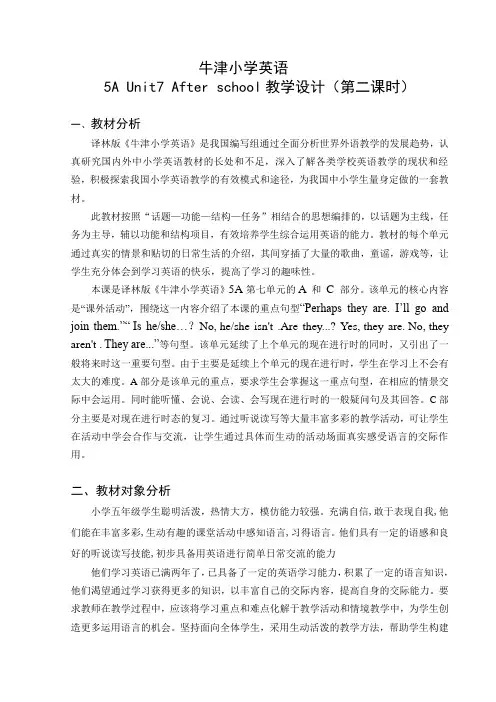
牛津小学英语5A Unit7 After school教学设计(第二课时)一、教材分析译林版《牛津小学英语》是我国编写组通过全面分析世界外语教学的发展趋势,认真研究国内外中小学英语教材的长处和不足,深入了解各类学校英语教学的现状和经验,积极探索我国小学英语教学的有效模式和途径,为我国中小学生量身定做的一套教材。
此教材按照“话题—功能—结构—任务”相结合的思想编排的,以话题为主线,任务为主导,辅以功能和结构项目,有效培养学生综合运用英语的能力。
教材的每个单元通过真实的情景和贴切的日常生活的介绍,其间穿插了大量的歌曲,童谣,游戏等,让学生充分体会到学习英语的快乐,提高了学习的趣味性。
本课是译林版《牛津小学英语》5A第七单元的A和C 部分。
该单元的核心内容是“课外活动”,围绕这一内容介绍了本课的重点句型“Perhaps they are. I’ll go and join them.”“Is he/she…?No,he/she isn't .Are they...? Y es,they are.No,they aren't .They are...”等句型。
该单元延续了上个单元的现在进行时的同时,又引出了一般将来时这一重要句型。
由于主要是延续上个单元的现在进行时,学生在学习上不会有太大的难度。
A部分是该单元的重点,要求学生会掌握这一重点句型,在相应的情景交际中会运用。
同时能听懂、会说、会读、会写现在进行时的一般疑问句及其回答。
C部分主要是对现在进行时态的复习。
通过听说读写等大量丰富多彩的教学活动,可让学生在活动中学会合作与交流,让学生通过具体而生动的活动场面真实感受语言的交际作用。
二、教材对象分析小学五年级学生聪明活泼,热情大方,模仿能力较强。
充满自信,敢于表现自我,他们能在丰富多彩,生动有趣的课堂活动中感知语言,习得语言。
他们具有一定的语感和良好的听说读写技能,初步具备用英语进行简单日常交流的能力他们学习英语已满两年了,已具备了一定的英语学习能力,积累了一定的语言知识,他们渴望通过学习获得更多的知识,以丰富自己的交际内容,提高自身的交际能力。

5A Unit 7一、教学要求1、四会单词和词组:after class, look for, join, a newspaper, a picture book, play with2、四会句型: Is he/she …? Yes, he/she is. No, he/she isn’t. Are they …? Yes, they are. / No, they aren’t.They are …3、三会单词和词组: a magazine, play chess, play cards, play with a yo-yo4、三会日常交际用语: Perhaps they are.I’ll go and join.Where are you going?5、了解字母i在单词中的读音6、会诵读歌谣In the evening二、单元教材分析本单元的核心话题是“课余活动”,涉及了体育、游戏、阅读、和帮助别人等四个方面。
主要句型是现在进行时的一般疑问句形式。
教师在教学过程中应避免明知故问式的机械训练,要尽量为学生创设真实的情景,以增强语言交际的真实性。
本单元结合核心话题和句型还引出了一些相关的动词短语,这为学生的进一步交际提供了比较充分的训练空间。
Unit 7(第一课时)一、教学内容B Look read and learn &C Work in pairs二、教学目标1、能正确地听、说、读、写词组a newspaper, a picture book, play with2、能正确地听、说、读单词及词组a magazine, play chess, play cards, play with a yo-yo3、能正确地听、说、读、写现在进行时的一般疑问句及其回答句型Is he/she …? Yes, he/she is. No, he/she isn’t.Are they …? Yes, they are./No, they aren’t.They are …4、能根据图片提供的情景进行描述和对话。
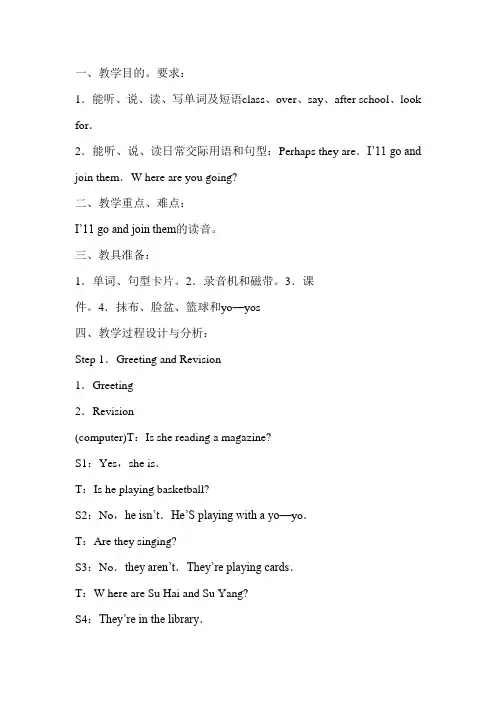
一、教学目的。
要求:1.能听、说、读、写单词及短语class、over、say、after school、look for.2.能听、说、读日常交际用语和句型:Perhaps they are.I‟11 go and jointhem.W here are you going?二、教学重点、难点:I‟11 go and join them的读音。
三、教具准备:1.单词、句型卡片。
2.录音机和磁带。
3.课件。
4.抹布、脸盆、篮球和yo—yos四、教学过程设计与分析:Step 1.Greeting and Revision1.Greeting2.Revision(computer)T:Is she reading a magazine?S1:Yes,she is.T:Is he playing basketball?S2:No,he isn‟t.He‟S playing with a yo—yo.T:Are they singing?S3:No.they aren‟t.They‟re playing cards.T:W here are Su Hai and Su Yang?S4:They‟re in the library.T:Are they studying in the library?S5:No.they‟re cleaning the library.(设计意图:利用电脑上的图片帮助学生复习现在进行时的一般疑问句,不但很好地巩固了上堂课所学的内容,而且为下面学习课文打好了基础,使学生在接触到课文里的这一句式时不再感到陌生。
) Step 2.Presentation and Drill(给抹布) 1.T:× ××1.Come he re. Pleaseclean the window.× × ×1:All fight.T:What is he doing?Ss:He is cleaning the window.(给盛着水的脸盆)T:× × ×2,please go andhelp him.× × ×2:OK.T:Boys and girls.is× × ×2 cleaning the win—dow?Ss:No.T:She‟S not cleaning the window.She‟S helping× × × 1.× × × 1.is × × × 2 helping you?× × ×1:Yes.Teach:“Is × × × helping you?‟‟and drill2.(computer)T:Look,who‟S she?(Miss Li)Now I‟m Gao Shan.(戴Gao Shan头饰)Excuseme.I‟m looking for WangBing.Is Wang Bing helping you in the office?M iss Li:No,he isn‟t.Teach:……Is Wang Bing helping you in the offic e?”and drill3.T:Is W ang Bing helping Miss Li in the offlce?Ss:No.T:I‟m looking for Wang Bing.Do you knowwhere he is?S1,2:Sorry,I don‟t know.Teach:“look for,looking for,I‟m looking forW ang Bing.‟‟and drill 3.Practice:T:I‟m sorry.I can‟t find WangBing.(脱下头饰) (computer)T:LOok at this boy.What‟S he doing?S1.Ss:He‟S looking for the bike.(computer)T:What is he doing?S2.Ss:He‟S looking for his keys.(设计意图:在教学句型“Is Wang Bing helping you in the office?”时,我利用学生间互相帮助擦窗户这一生活情景,引导学生学习新句型,不仅形象,而且易于被学生接受和理解,同时让他们学会在生活中运用英语。
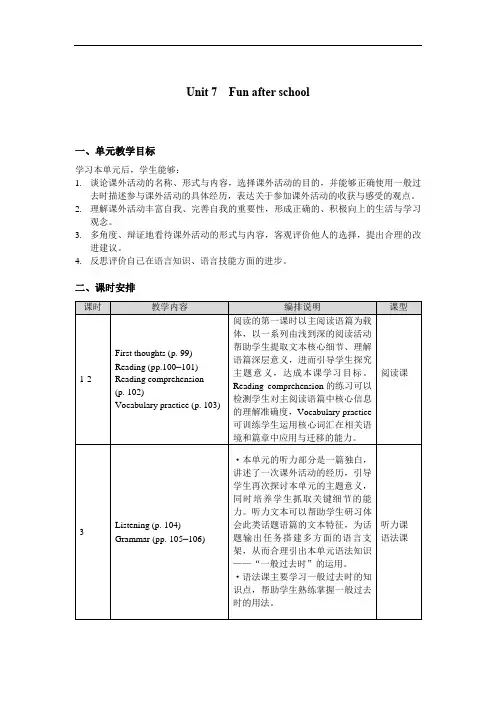
Unit 7 Fun after school一、单元教学目标学习本单元后,学生能够:1.谈论课外活动的名称、形式与内容,选择课外活动的目的,并能够正确使用一般过去时描述参与课外活动的具体经历,表达关于参加课外活动的收获与感受的观点。
2.理解课外活动丰富自我、完善自我的重要性,形成正确的、积极向上的生活与学习观念。
3.多角度、辩证地看待课外活动的形式与内容,客观评价他人的选择,提出合理的改进建议。
4.反思评价自己在语言知识、语言技能方面的进步。
二、课时安排三、分课时教学设计第一~二课时(Periods 1-2)【单元课前预习】1. 学生根据思维导图的提示,在方框中填写关于自己参加课外活动及学校社团情况的关键词。
2.采访4人小组中的每位同学,准备好课堂上汇报。
可采用以下表格收集记录采访到的信息:3. 鼓励学生课前思考以下问题,在课前预习单上写下简单回答,准备到课堂上分享。
What special days do you have at your school?【教学过程】Step 1读前活动。
1.View 识图师生共同给第100页图中的学校社团标上序号,比如从the Baking Club开始,按照顺时针方向,依次是the Baking Club (1), the Science Club (2), the Drama Club (3), the Craft Club (4), the Chinese Literature Club (5), the Computer Club (6)。
然后请同学们花一点时间仔细观察练习1图中的各个视觉元素。
识别关键部分,注意图中的标签或文字,这些元素呈现了接下来要谈论的主要信息。
接着教师带着学生一起分析图中呈现的信息,指出在课堂上要讨论的特定概念和具体细节。
最后做一个小游戏:I say clubs you say numbers。
教师读社团名称,学生回答相应的数字序号。
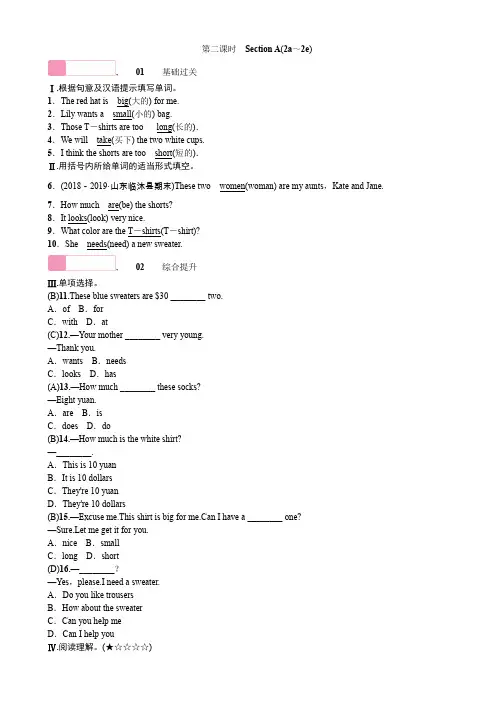
第二课时Section A(2a~2e),01基础过关Ⅰ.根据句意及汉语提示填写单词。
1.The red hat is big(大的) for me.2.Lily wants a small(小的) bag.3.Those T-shirts are too long(长的).4.We will take(买下) the two white cups.5.I think the shorts are too short(短的).Ⅱ.用括号内所给单词的适当形式填空。
6.(2018-2019·山东临沐县期末)These two women(woman) are my aunts,Kate and Jane.7.How much are(be) the shorts?8.It looks(look) very nice.9.What color are the T-shirts(T-shirt)?10.She needs(need) a new sweater.,02综合提升Ⅲ.单项选择。
(B)11.These blue sweaters are $30 ________ two.A.of B.forC.with D.at(C)12.—Your mother ________ very young.—Thank you.A.wants B.needsC.looks D.has(A)13.—How much ________ these socks?—Eight yuan.A.are B.isC.does D.do(B)14.—How much is the white shirt?—________.A.This is 10 yuanB.It is 10 dollarsC.They're 10 yuanD.They're 10 dollars(B)15.—Excuse me.This shirt is big for me.Can I have a ________ one?—Sure.Let me get it for you.A.nice B.smallC.long D.short(D)16.—________?—Yes,please.I need a sweater.A.Do you like trousersB.How about the sweaterC.Can you help meD.Can I help youⅣ.阅读理解。
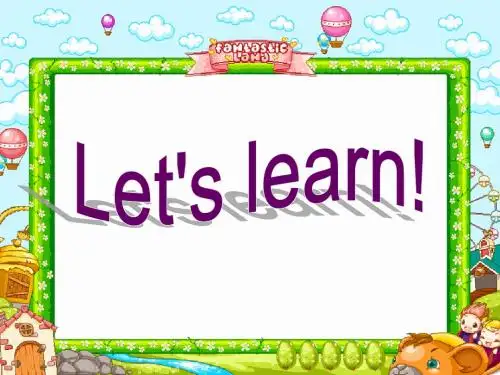

Unit 2 After schoolFun timeTeaching contents 教学内容Fun timeTeaching aims and learning objectives 教学目标1. 能初步地听懂、会说、会读、会写单词:Sunday, Monday, Tuesday, Wednesday, Thursday, Friday, Saturday。
2. 能熟练地听懂、会说、会读句型:I have …;He/She has …;What day is it today?及回答It’s…3. 能初步听懂、会说、会读句型:What lessons do you have? 以及回答I have …Focus of the lesson and predicted area of difficulty 教学重点和难点教学重点:1. 学生能够熟练运用句型What day is it today? 和What lessons do you have?进行提问并回答。
2. 学生能够通过合作完成任务。
教学难点:学生能够综合运用语言进行简单交流,合作完成任务。
Teaching procedures 教学过程Step 1 GreetingT: Hello, boys and girls. Nice to meet you.S: Nice to meet you too.T: How are you?S: …T: What day is it today?S: It’s…T: What lessons do you have this morning?S: I have …【设计意图:在Free talk中复习本单元的重点句型What day is it today?和What lessonsdo you have?通过对话的形式唤醒学生的已有知识。
】Step 2 Revision time1. T: Look, who is he?S: He is Liu Tao.T: What can he do?S: He can play table tennis.T: What day is it today?S: It’s Wednesday.T: Can Liu Tao play table tennis with his friends today?S: No.T: Why? Now, work in groups, and try to answer my question.(学生两人一组讨论)2. T: Liu Tao wants to play table tennis. But Mike …S: Mike has a football match.T: What about Su Hai and Su Yang?S: They have a swimming lesson.T: So they decide to play table tennis on Saturday. Why?S: They don’t have any lessons on Saturday.【设计意图:这一环节复习课文的细节信息,学生在讨论及回答的过程中,复习第一课时学习的知识,他们的已有知识被唤醒,为接下来的学习做好准备。
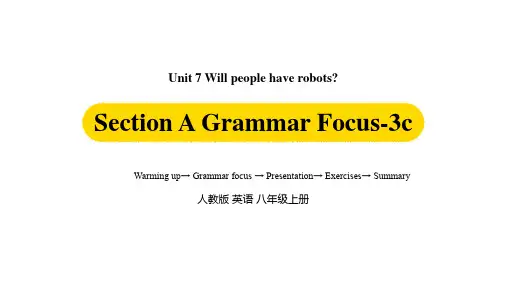
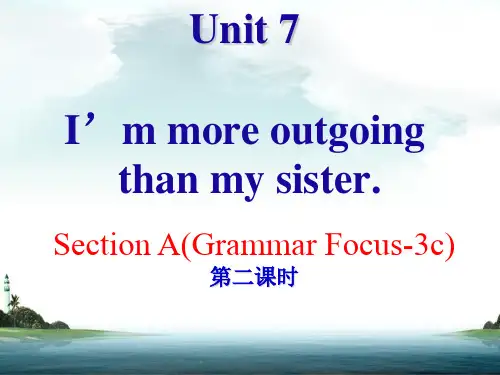

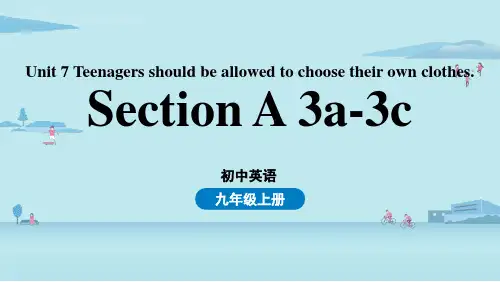
Unit 2 After school知识梳理+巩固练习(含答案)一、语音解析:字母a在单词中发/æ/,例如:例如:b a g, c a p, h a mburger, s a ndwich, sn a ck二、重点单词四会Wednesday星期三Saturday星期六Sunday星期日Tuesday星期二Thursday星期四Friday星期五三会go去match比赛today今天when什么时候every每个day天三、核心短语what day星期几on Tuesday/Friday/Saturday在星期二/星期五/星期六what lessons什么课have Chinese and Maths有语文课和数学课get up起床get up at five五点起床after school放学后go and play table tennis去打乒乓a football match一场足球比赛have a football match有一场足球比赛a swimming lesson一节游泳课have a swimming lesson有一节游泳课don't have any lessons没有任何课every day每天at six在六点Days of the week星期之歌make a week构成一周come and play table tennis来打乒乓球四、重点句型1. --What day is it today? --It's Wednesday.知识点: “What day is it today?”询问“今天星期几?”用法:其答句为“It's十表示星期的名词。
”,也可以省略“It's”进行简略回答。
询问“今天星期几?”还可以用“What day is today?”。
例句:(l)--What day is it today? --It's Friday.(2)--What day is today? --Sunday.2. She has a swimming lesson too.知识点:have和has都表示“有”,强调所属关系。
Unit 2 After school教材分析本单元主要话题是谈论课外活动,重点内容是一周七天的名称以及与如何谈论课后活动的相关句型。
能正确地听、说、读单:after school, go, match, today, when, every, day. 能正确地听、说、读、写单词:Wednesday, Saturday, Sunday, Tuesday, Thursday, Friday, get up. 要求学生能够熟练掌握课堂用语,如:I hav e... He/She has... What day is it today? It’s.... What a pity!All right.等。
并能在真实的情景中和日常交际正确运用。
教学目标1.能正确理解、掌握对话内容, 能朗读对话, 并能熟练背诵对话。
2.能正确地听、说、读单词:after school, go, match, today, when, every, day.3.能正确地听、说、读、写单词:Wednesday, Saturday, Sunday, Tuesday, Thursday, Frid ay, get up.4.能听懂、会说、会读、a字母发:/a/5.能熟练地歌唱英文歌曲:Days of the week6.能够熟练掌握课堂用语,如:I have... He/She has... What day is it today? It’s.... What a pity! All right.等, 并能在真实的情景中和日常交际正确运用。
教学重点1.能正确理解、掌握对话内容, 能朗读对话,并能熟练背诵对话。
2.能正确地听、说、读单词:after school, go, match, today, when, every, day.3.能正确地听、说、读、写单词:Wednesday, Saturday, Sunday, Tuesday, Thursday, Friday, get up.4.能听懂、会说、会读、a字母发:/a/5.能够熟练掌握课堂用语,如:I have... He/She has... What day is it today? It’s.... What a pity! All right.等, 并能在真实的情景中和日常交际正确运用。
《5A Unit 7 After school》教案三篇(经典版)编制人:__________________审核人:__________________审批人:__________________编制单位:__________________编制时间:____年____月____日序言下载提示:该文档是本店铺精心编制而成的,希望大家下载后,能够帮助大家解决实际问题。
文档下载后可定制修改,请根据实际需要进行调整和使用,谢谢!并且,本店铺为大家提供各种类型的经典范文,如总结报告、致辞讲话、短语口号、心得感想、条据书信、合同协议、规章制度、教学资料、作文大全、其他范文等等,想了解不同范文格式和写法,敬请关注!Download tips: This document is carefully compiled by this editor. I hope that after you download it, it can help you solve practical problems. The document can be customized and modified after downloading, please adjust and use it according to actual needs, thank you!Moreover, our store provides various types of classic sample essays for everyone, such as summary reports, speeches, phrases and slogans, thoughts and feelings, evidence letters, contracts and agreements, rules and regulations, teaching materials, complete essays, and other sample essays. If you want to learn about different sample formats and writing methods, please stay tuned!《5A Unit 7 After school》教案三篇《5A Unit 7 After school》教案篇1教学内容:5a unit7 after school a版块课时:第二课时教学理念:《新课标》中指出:“任务型”课堂教学模式强调让学生的注意力主要放在怎样利用英语作为交流的媒体来完成任务。